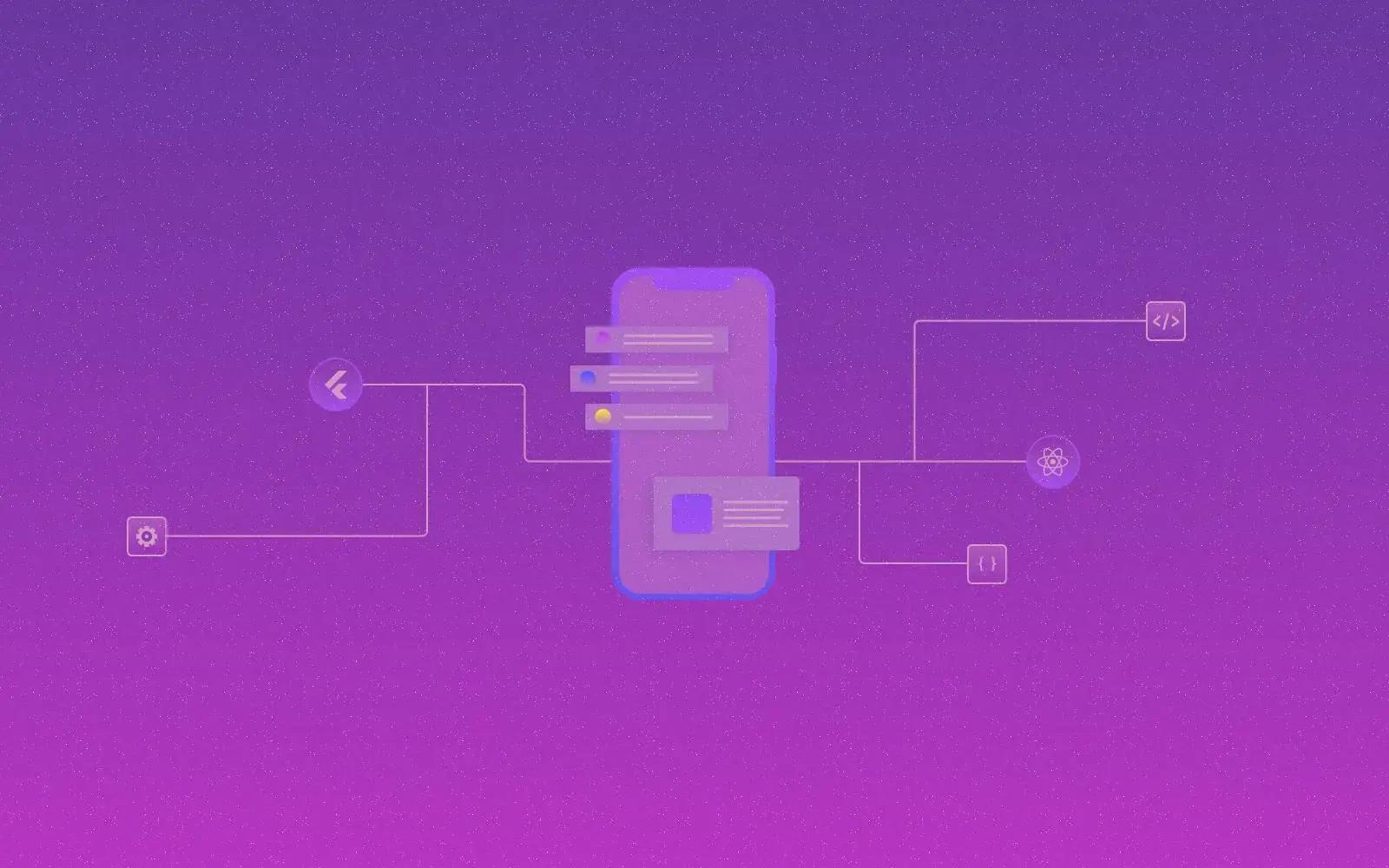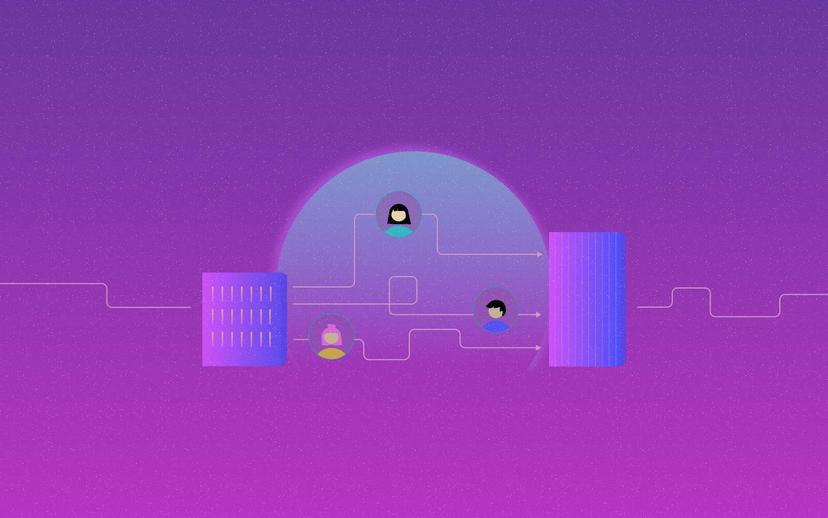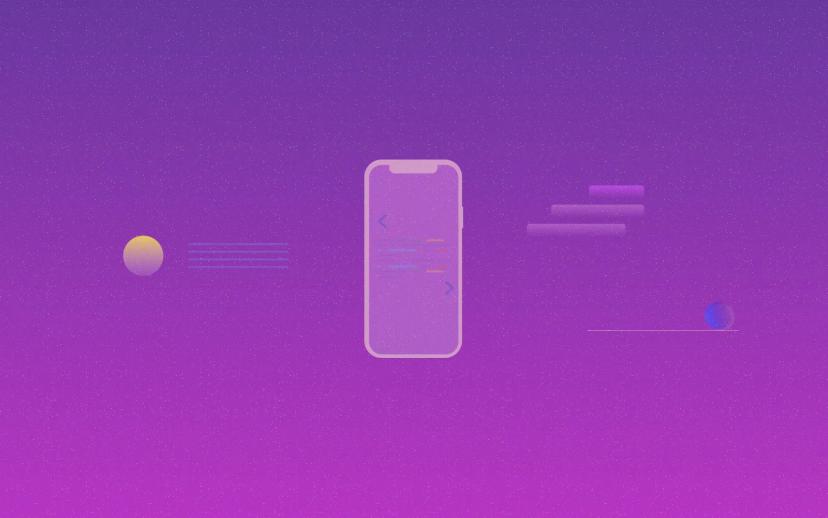
Flutter vs React Native in 2023 - Which One To Choose?
The mobile app industry has gained a competitive edge as people worldwide appreciate the convenience of accessing everything through their phones. However, this rise has brought up another issue - which tool should programmers use to create such apps? This question has become problematic for many developers. One common dilemma is choosing between Flutter vs React Native. Today, we will examine both frameworks and define their advantages to simplify decision-making.
In this article, you'll learn:
1. What are the similarities between React and Flutter
2. What is the Flutter framework,
3. What are the advantages and disadvantages of Flutter,
4. When to use the Flutter framework in your professional ventures,
5. The definition of React Native,
6. When should you opt for this framework,
7. React vs Flutter - which framework is better for you,
8. Conclusion
Before delving into this article, check out our expert's view on Flutter advantages described in the entries listed below:
- Flutter - constant improvements,
- How to implement a responsive Flutter application?
- Platform-specific code in Flutter
- Behind Flutter - Dart
React Native vs Flutter - the Similarities
Beginning our discourse, it is worth enumerating several factors that make React Native and Flutter similar. They both are open-source platforms designed for cross-platform application development. As such, they consist of several similar components, the most prominent of which is Hot Reload. This feature, known for React Native devs as “Live Reload” allows the developers to enjoy the benefit of immediate visualization of code changes without the need to refresh the application, resulting in expedited coding, development, and resolution of software bugs.
Let us now touch upon the most popular applications created with both frameworks. Their contributions to numerous prominent applications underscore the popularity of Flutter and React Native. Flutter development has played a pivotal role in applications such as Google Ads, Groupon, and Xianyu by Alibaba applications. In contrast, React Native has been instrumental in developing globally recognized applications like Instagram, Facebook, and Pinterest, among many others.
React Native and Flutter enable developers to create mobile applications with a single code base for multiple platforms - such as Android and iOS. This approach ensures that users have identical experiences on their respective devices. Additionally, it significantly reduces the need for testing by nearly 50%, as writing fewer tests for multiple platforms is more efficient. This coding strategy simplifies the development process and results in a more streamlined and cost-effective development cycle.
All these aspects sum up the core of the similarities between both frameworks. However, the comparison also takes into account the disadvantages - to see the full context and make it easier to choose between the two solutions. Let's now turn to the advantages of Flutter and see what this rather unusual framework offers businesses and developers alike.
What is Flutter?
Flutter is a framework developed by Google. We can observe its utilization of core technology in several of the company's widely-used products, including Google Ads and Google Pay. In May 2017, Flutter was launched as an open-source project, granting access to a broader community of developers. Flutter achieved its first stable release in December 2018.
Initially, Flutter was created for mobile platforms, specifically iOS and Android devices, providing an alternative to existing cross-platform development frameworks. Over time, Flutter's popularity has grown exponentially, surpassing its foremost competitor, React Native.
Flutter boasts an active and collaborative community where developers can share knowledge, contributing to its ongoing growth and development. The community is constantly expanding, with an increasing number of packages, libraries, and tools available to developers, enabling faster app development. Developers can capitalize on pre-existing solutions, which results in quicker app development.
One of the most characteristic features of Flutter is the utilization of Dart. It has evolved into a refined programming language with a strong emphasis on features and user interface (UI) development. The incorporation of sound-null-safety in version 2.0 has been instrumental in ensuring the language's reliability, making it an invaluable choice for both novice and experienced developers. Its exceptional development experience and optimized speed render it an excellent option for developers of all levels.
If you are interested in how Dart influences the development of mobile and cross-platform applications, see the “Behind Flutter - Dart” article on our blog.
Pros & Cons of Flutter
Flutter has become the framework of choice for developers worldwide. According to Google, the creators of this popular tool, by 2023, over 100,000 applications will have been developed using Flutter. Its growing popularity is not surprising given its user-friendly interface and abundance of useful tools that make it a valuable asset for mobile and cross-platform application development.
Knowing all of this, let us now delve into what sets Flutter apart and explore why it is such an efficient tool for creating applications with ease and speed.
Cross-Platform Development with Flutter - Advantages
Efficiency of Development Process
First, imagine a hypothetical situation where you plan to develop an MVP. You aim to design an application for mobile devices but are still on the edge regarding which platform to use. Flutter is a tool faultlessly suited for such circumstances due to its ability to build Android and iOS apps in no time, effectively cutting the cost of creating separate codebases.
This factor plays a significant role in Flutter as a choice of a plethora of start-ups or enterprises. This framework gives you the freedom to test and modify your solutions to create a well-rounded product suitable to plentiful environments.
However, this advantage is not unique to Flutter only. Other cross-platform solutions - such as React Native, also offer this advantage. Nonetheless, its popularity rapidly grew, putting the competition abruptly behind as early as 2019. What's more, the trend continues to this day. So let us explore this topic closer and find the further values that made Flutter so unequivocally dominate the IT market.
High Performance of the Developed Apps
The applications designed with Flutter constitute performance comparable with native mobile apps. How is it possible? This framework is unique in the sense that it does not use a bridge for establishing communication between the platform and the app. The result? Your clients can enjoy an application that works faster, consists of beautiful, fast-paced animations, and has significantly fewer issues related to its performance.
Incomparable Time-to-Market
A unified codebase for iOS and Android has led Flutter to create one of its most prominent advantages on the market. With the inclusion of a vast number of features facilitating the development process, we can create and update your application in virtually no time. All that while providing you with constant patches and updates designed specifically for each platform!
Unified UI and Business Logic
Flutter provides a consistent UI experience across different platforms, reducing the need for platform-specific adjustments. That is in contrast to the traditional development platforms which demand singular codebases for Android and iOS.
The result is indeed compelling. Apart from reducing the time and manpower necessary to create separate codebases, you can also accelerate the time of release and create a perfect experience for the end-users.
All of this is also possible with a wide range of customizable widgets and a vast choice of libraries. With Flutter, one can create visually appealing, complex user interfaces for each platform, with no need to extensively customize the solutions to each platform.
Not Only for Mobile
We also have great news for everyone who plans to introduce a tool to create apps for the web, desktop, or even TV - the Google team responsible for Flutter is going in this direction. Though these features are still undergoing development, we do count on the IoT solutions being integrated coherently into this framework.
Flutter and its disadvantages
An SDK should not be chosen solely based on its advantages. It's vital to consider its drawbacks to make a comprehensive judgment. With that in mind, let's take a closer look at the disadvantages of Flutter. Are you ready to begin?
A Relatively New Platform
Flutter is still a novelty on the market. Due to that, plenty of features still is under constant development. If you are looking for a more established toolkit, it is worthwhile to check out its competition.
A Fairly Small Number of More Advanced Features
Though Flutter provides a developer with the essential toolkit, it still can miss out on more advanced features. Due to that, it can be unsuitable for building more sophisticated applications. That may be the case if you decide to develop an application solely for Android or iOS. Moreover, Flutter does not provide solutions to such platforms as tvOS, Android Auto, CarPlay, or watchOS.
Dart Is Not So Popular
Similar to the Flutter framework, the programming language Dart has yet to gain widespread usage and popularity. As a result, there is ample opportunity for skilled developers to enhance their expertise in this language.
Absence of Native Widgets
Though Flutter ships Material Design and Cupertino widgets, themes, and layouts, sometimes you can find it lacking in several scenarios. Sometimes it can come as an advantage. However, there are also cases where it can make updating your apps more troublesome.
For example, let us now consider the situation, when we built an app using Flutter, and then a new version of a platform - be it Android or iOS - is launched. Though you can quickly update your library, rebuild your application, and again publish it on your store, it poses some extra steps to take.
However, it also comes with a hidden advantage. You are always in control - so, if you want to introduce any worthwhile changes into your design, Flutter allows you to perform it in a quick and accessible way.
When To Use Flutter?
Knowing the full picture, we can now rightfully say when the usage of Flutter is worth your consideration. Mind, however, that each project is a state of the art on its own. Each situation demands an individualistic approach to create a solution best suited to your company’s needs.
When You Develop an MVP
Plenty of builder tools along with the UI widgets make Flutter an SDK perfect for developing applications extremely quickly. All of the factors above make for an efficient solution that provides you with fast-paced coding, testing, as well as overall QA procedures. If you are in a rush and want to present your project to the world sooner than later, there is no better option than Flutter. The MVPs created using this SDK are reliable and easy to use.
When You Want to Rely on Pixel-Perfect User Interface
Flutter is a UI-centered tool that allows you to exercise a wide range of solutions to make your app easy to use and aesthetically pleasing. Quickly and efficiently, you can design an application that serves your business needs and does not impact its performance.
When You Need an App With Excellent Performance Ratio
Is your app’s speed and performance number one on your priority list? If so, Flutter is a solution for you. As we have mentioned before, this SDK does not use a JavaScript bridge, resulting in better overall performance. It includes a lack of lagging, clipping, smoother animation sequences, etc.
When You Need to Create an App ASAP
This situation falls back onto Flutter’s disposition for extremely quick coding, resulting in a successful, efficient app development process. However, the coding process is not the only aspect that Flutter enhances. The Hot Reload feature allows the developers to fix bugs and perform experiments to present new, potentially successful features.
What is React Native?
React Native is a common alternative to Flutter. This SDK utilizes JavaScript and serves its purpose as a framework for building cross-platform applications. According to the FireArt Studio, React Native is second in popularity tool that still catches up to the interest of 42% of developers as a first-choice SDK. Similarly to Flutter, it also uses one codebase to create mobile-centered software.
When to Use React Native?
React Native is a great framework for making customer-facing apps that don't need OS-specific features or complex design. It's fast to develop and stable. If you build your web app with React, it's easy to make a mobile app too. There are, however, several factors that may strongly affect your choice of platform. Consider it carefully to deliver the best app experience.
Leveraging Existing JavaScript Skills
If your development team is well-versed in JavaScript, React Native offers a smooth transition, enabling you to apply your existing skills to mobile app development.
Access to a Vast Ecosystem
When you need access to a wide array of third-party libraries, plugins, and a mature ecosystem, React Native's extensive community and library support can be highly beneficial.
Rapid Prototyping
For projects where quick prototyping and iterations are crucial, React Native's "Fast Refresh" feature and the ability to make real-time code changes can significantly accelerate the development process.
Integration with Existing Native Codebase
If you're working on a project that requires integration with existing native code or libraries, React Native provides a smoother path for incorporating native modules and functionalities.
React Native vs Flutter - What Are The Differences?
Several differences strongly impact the choice between React Native and Flutter. With the appropriate knowledge about this subject, we can choose the most suitable tool for the project’s needs. Let us now briefly describe the topic to depict the major differences between those SDKs.
UI Components
Flutter and React Native both use different approaches for building user interfaces. Flutter employs a widget-based approach, offering a rich set of customizable widgets, while React Native uses components that resemble native UI elements.
Native Modules vs. Platform Channels
One of the advantages of using React Native is its ability to easily incorporate native modules specific to each platform. On the other hand, Flutter utilizes platform channels to communicate with native code, which can be more time-consuming.
Cross-Platform Development
Flutter and React Native both support cross-platform development, but Flutter's "write once, run anywhere" approach is often preferred over React Native's platform-specific adjustments.
Licensing
The Flutter platform is governed by the open-source BSD licensing agreement, whereas React Native is overseen by Facebook and falls under the MIT licensing agreement. Licensing requirements and terms could have implications on a project's decision-making process.
Conclusion
As with many things in life, the question of Flutter vs. React Native we must answer: it depends. Both platforms bring many advantages to a developer's daily work. However, their advantages are so situational that your choice will depend on many factors. From your preferences to your company's resources, the needs of the project or the requirements of the client, all of these can influence which tool will better affect the course of the project.
Flutter is the better choice if:
- You plan to implement an MVP quickly;
- You care about creating an effective interface efficiently
- You place special emphasis on high application performance,
- When you plan to release the application as soon as possible.
In turn, we recommend choosing React Native on a case-by-case basis:
- If your team uses specialists in JavaScript programming,
- If you care about rapid prototyping,
- If you care about the support of a rich ecosystem of plugins, libraries and community support
- When you are working on a project that requires integration of already existing code and libraries
Flutter has enabled us to offer mobile app development services with even greater effectiveness. Find out what we can bring to the table for you.
Share this post:

Stay updated with new posts
Get notifications when new articles are posted. You can always unsubscribe from the list.
Softnauts is committed to processing the above information. Read Privacy Policy

